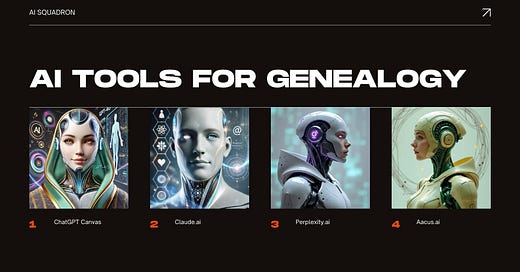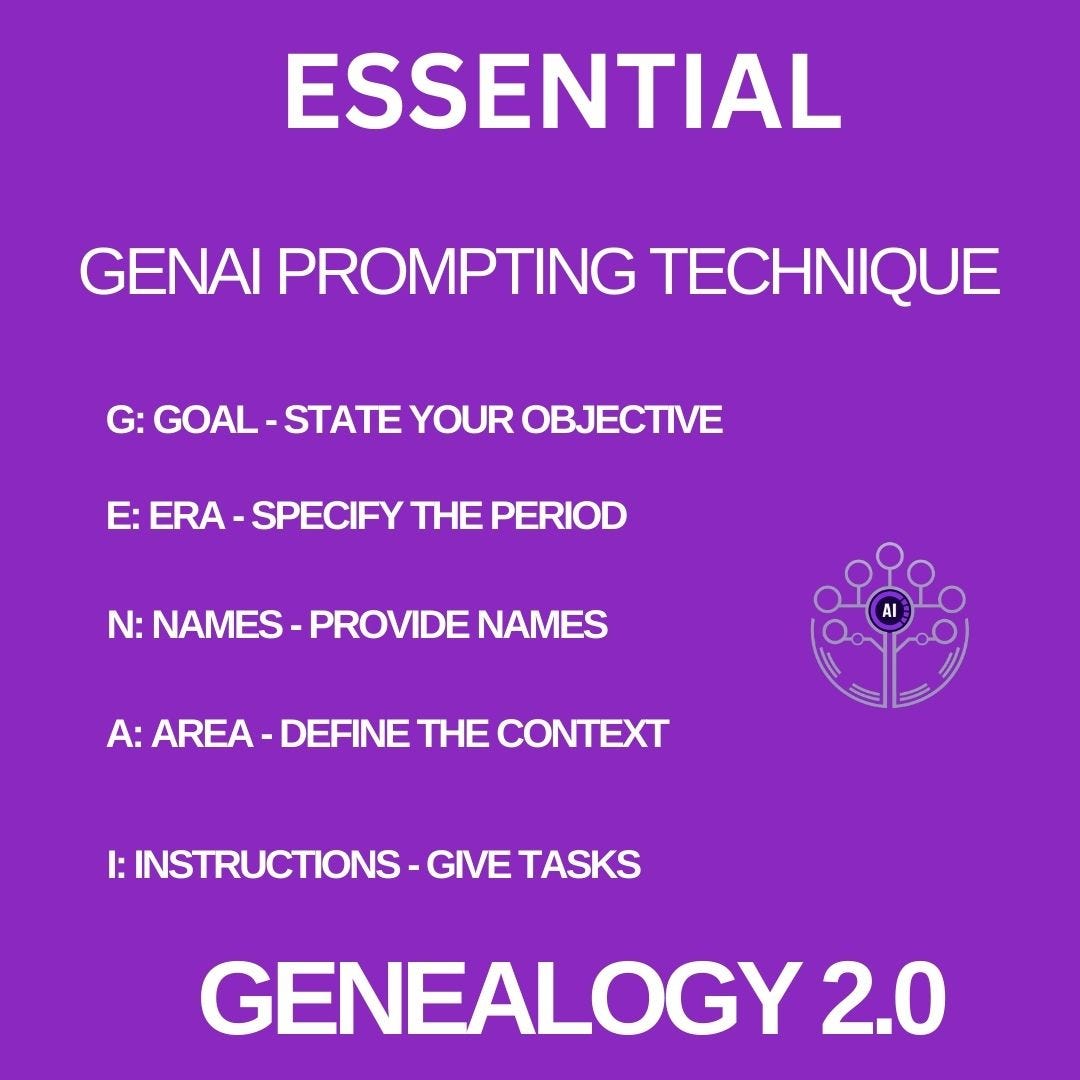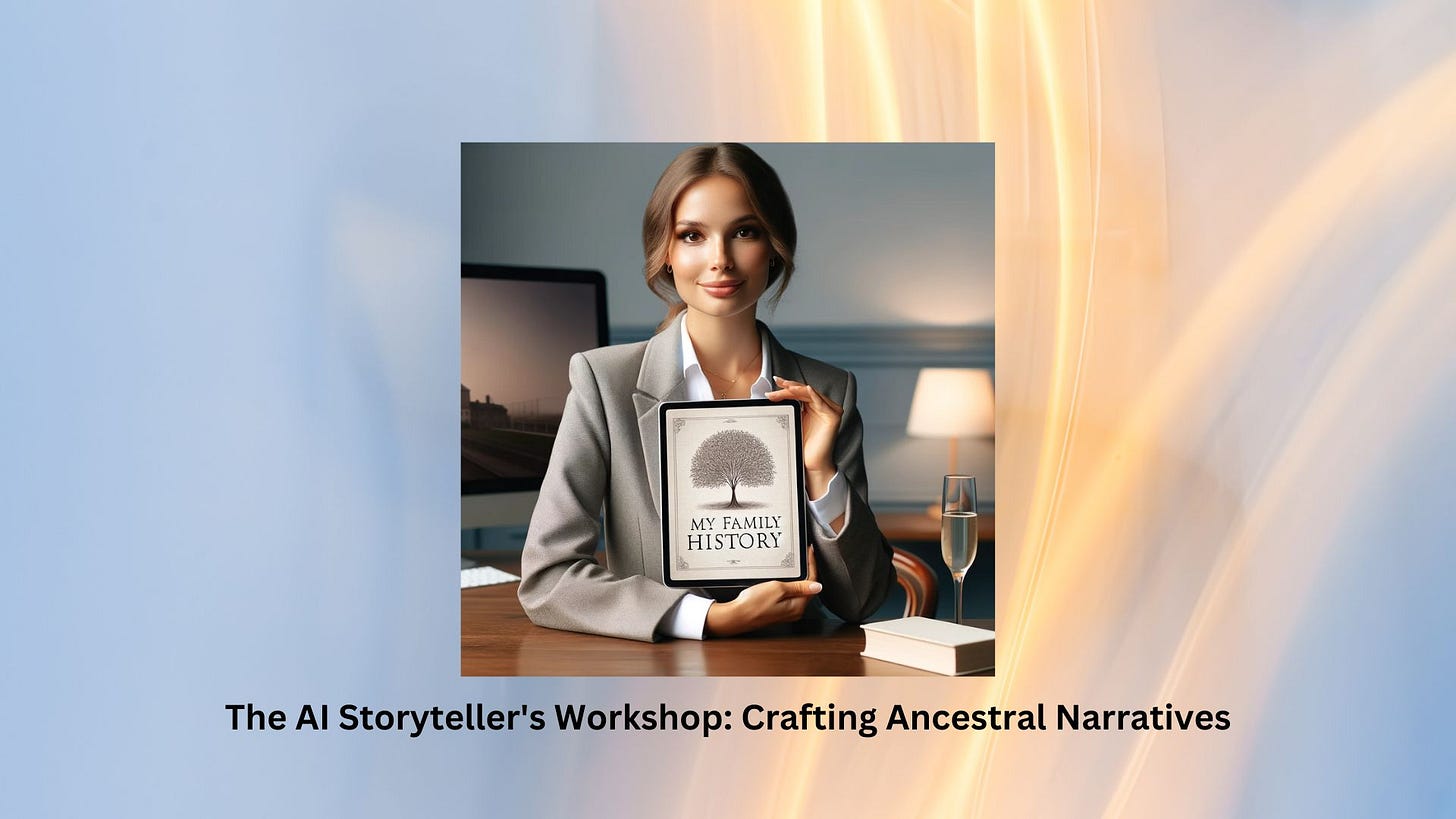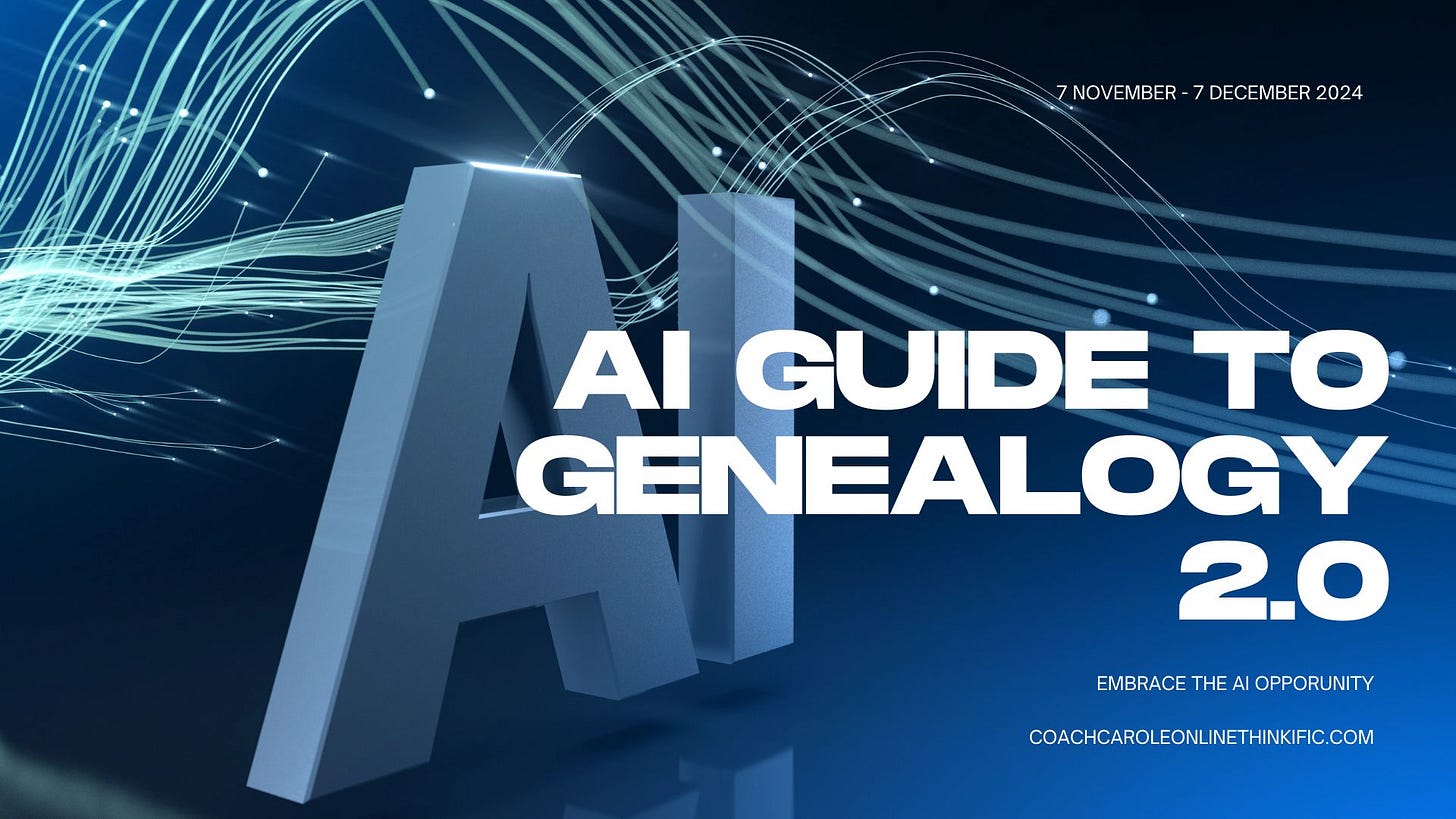Revolutionise Your Family History: Master 5 AI Skills for Genealogy
Personal Anecdotes about AI in Genealogy
My explorations of AI tools for genealogy began in early 2023 when I first heard about Chat GPT. Since then I have been employing the assistance from my AI Squadron for my genealogy projects. My squad consists of Chat GPT Canvas, Claude AI, Perplexity AI and Abacus AI.
In this post you will find a series of my personal Case Studies.
Case Study 1: Research Planning
Most recently, I was able to generate a useful research plan for my One Place Study (OPS) using Perplexity.ai.
<Prompt>
One Place Study Planning: Please create a One Place Study Research Plan for the small village of Eglwys Brewis in Pembrokeshire, Wales. Locate resources that explore the village's history, imagery, and geography and focus on its purpose as accommodation for RAF personnel and their families during World War II.
<Response>
You can view the plan in place in my OPS here.
Five Essential AI Skills
In the ever-evolving world of genealogy, artificial intelligence (AI) has emerged as a game-changing tool. But like any powerful tool, its effectiveness depends on the user's skill. Today, we're exploring the five essential skills every modern genealogist needs to harness AI's full potential in family history research.
1. AI Tool Selection and Integration
Just as a master craftsman knows which tool to use for each job, a skilled genealogist must learn to choose the right AI tool for each task.
How to Develop This Skill:
Regularly explore new AI tools designed for research and writing.
Practice comparing different AI tools based on their strengths and limitations.
Experiment with integrating multiple AI tools into your workflow.
Case Study 2: An AI Workflow
I now integrate my squad of AI tools when working on genealogy projects. I have each of them lined up in my bookmarks tab for ease of access, and will choose the appropriate tool depending on my focus. eg Chat GPT for brainstorming and image creation; Claude for in-depth planning and narrative guidance, Perplexity for historical context.
2. Effective AI Communication and Prompting
Communicating effectively with AI is like learning a new language. The better you speak it, the more valuable information you'll receive.
How to Develop This Skill:
Practice writing clear, specific prompts using techniques like the GENAI method.
Experiment with different prompt structures and analyze the results.
Keep a prompt journal to track effective and ineffective prompts.
Case Study 3: The Concealment Mystery
During my research for an ancestor, I discovered an old Newspaper clip about the ‘concealment of birth’ and how my great-grandmother was accused of this crime. With the help of AI tools, I was able to: transcribe the newspaper clip images into text; interrogate the web for a history of the crime and its punishments; and weave them all together to create a story from a family historian perspective.
3. Critical Evaluation and Fact-Checking
While AI can process vast amounts of information quickly, it's up to us to ensure that information is accurate.
How to Develop This Skill:
Practice cross-referencing AI-generated information with primary sources.
Develop a systematic approach to fact-checking AI outputs.
Stay updated on common AI hallucinations and biases in genealogical contexts.
Case Study 4: Interrogating Census Records
In one of my recent conversations with Chat GPT 4, I requested a tabular display of data about family groups with birth and death dates from a series of uploaded census records. I discovered that the parents of my ancestors were living just a few houses down the same street. By looking more closely at two of these records, I could see that this was true.
4. AI-Assisted Storytelling
AI can help breathe life into the names and dates on your family tree, creating rich, engaging narratives.
How to Develop This Skill:
Practice using AI to generate historical context for different periods and locations.
Experiment with AI-generated character traits and dialogues based on known facts.
Learn to blend AI-generated content with your writing style.
Case Study 5: Family History Stories
I have been able to create a series of chapters for my ebooks and titles for blog posts on maternal and paternal family groups using AI tools. I use tools such as Chat GPT to suggest chapter titles based on my research data, and Claude AI to prepare chapter content layouts and text, plus added historical context from prompts in Perplexity AI.
5. Adaptive Learning and Technological Flexibility
The world of AI is constantly evolving. Staying curious and flexible is key to leveraging the latest advancements in your research.
How to Develop This Skill:
Set aside regular time to explore new AI tools and features.
Participate in online forums or communities focused on AI in genealogy.
Regularly update your research workflow to incorporate new AI capabilities.
Case Study 6: The AI Detective
I stay updated on the latest features of AI tools suitable for genealogy by subscribing to YouTube channels that focus on AI. I have a couple of favourites that you may find useful:
Skill Leap to stay on the cutting edge of AI and Jason West Digital to fine-tune your skills.
I also subscribe to the Newsletter from There’s An AI For That for weekly updates on new tools and lessons.
Putting It All Together: Your AI Genealogy Skill-Building Project
Ready to level up your AI skills? Here's a practical project to get you started:
Choose three genealogy-related tasks you frequently perform.
Select three different AI tools to assist with these tasks.
Perform each task with each tool, using the skills we've discussed.
Create a comparison matrix evaluating the performance of each tool for each task.
Write a brief report on which tool worked best for each task and why.
Building your confidence: try the AI confidence builder approach
The AI Confidence Builder Approach:
Step 1: Recognise the opportunity (consider a project task you’d like help with)
Step 2: Start small (select one AI tool)
Step 3: Learn by doing (create a prompt)
Step 4: Enrol in ‘AI Guide to Genealogy 2.0’ (Learn how AI tools will transform your genealogy in 30 days). Gain essential skills in selecting and using AI tools.
Become confident with Genealogy 2.0 techniques—enhance your ancestral research and storytelling.
WRAP UP
By developing these five key skills and building your confidence, you'll be well-equipped to harness the power of AI in your genealogical research. Remember, AI is a powerful assistant, but it's your expertise, creativity, and critical thinking that truly bring your family's history to life.
Case Study 7: Creating specific prompts
One way that I find it useful to employ an AI tool for genealogy is in generating specific prompts under the topics of ‘Historical Context’ and ‘Storytelling’ with sub-topics of ‘Research-to-Narrative Conversion Prompts’ and ‘Historical Context-to-Story Connection Prompts’.
Try this process for yourself.
I share the process for creating these specific prompts and showcase the results using my own ancestry data, in lessons within these modules of the AI Guide to Genealogy 2.0 course.
Happy researching, and may AI help you uncover fascinating stories in your family tree!












This is great. Thanks for sharing Carole!